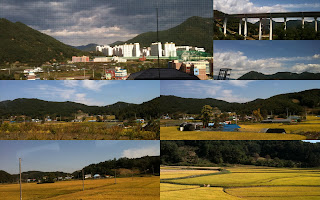 articipate in the discussions, see the procedures of decision, and experience the emerging group dynamics. I also admired Antonio Krueger about steeping back, consequently keeping his own opinion out of discussion, but moderating the flow of arguments effectively instead.
articipate in the discussions, see the procedures of decision, and experience the emerging group dynamics. I also admired Antonio Krueger about steeping back, consequently keeping his own opinion out of discussion, but moderating the flow of arguments effectively instead.I was re
 ally fascinated about the entire procedure: based on the expertise of the PC members and additionally reviewers they have invited, arguments in favor and against papers had been
ally fascinated about the entire procedure: based on the expertise of the PC members and additionally reviewers they have invited, arguments in favor and against papers had been collected. The grades provided by the reviewers provided the line of sequence in which the papers had been discussed: high-ranked papers did not create long discussions and where clearly in, the same on the bottom clearly out. However, each member could intervene, so in fact it was more about valid arguments since the numeric grades whi
collected. The grades provided by the reviewers provided the line of sequence in which the papers had been discussed: high-ranked papers did not create long discussions and where clearly in, the same on the bottom clearly out. However, each member could intervene, so in fact it was more about valid arguments since the numeric grades whi ch can be kind of arbitrary.
ch can be kind of arbitrary.Most of the time obviously was dedicated to these "borderline" papers. For those papers it is really that they inspire at least one PC member that defends this paper with passion throughout the discussion. This is most likely to happen if the PC member is in this very specific field and believes its importance, so picking the conference with potential champions is an important strategy when submitting papers.
My lessons are:
- Papers have to reach the right reviewers. Reviewers that are in the very same field and can enthusiastic about the topic. Reviewers are reached by addressing the topic of the paper well in the title and abstract.
- Papers have to be written in a way that the story and conclusions can be conveyed to the primary and secondary reviewer in a way such that they can present the papers in the PC meeting in 1-2 minutes. As such abstract and conclusions are the most important part of a paper.
- Additionally, research has to be solidly conducted such that obvious objections ("to little users in the study", "advancement from related work is unclear", "statistics cannot be comprehended") do not apply.
- Eventhough blind submission is required the majority of the PC members considers comprehensiveness of the paper is more important - "anynomity is a means to an end". As such authors should certainly remove obvious references to their institutions but shouldn't spend to much time on anonymizing pictures and other data relevant to the story of their paper as in the end it does not matter.
- Authors should not submit notes (short contributions) as reviewers do not really understand the concept of notes. Also US people don't consider this as valuable contributions as they do not count for their metrics.
I really enjoyed to experience the passion and dedication all PC members brought to t
 he table (from my perception laptops were only used to dig up reviews and papers, no emails or other unrelated stuff) in order to really identify the best papers that move the field and the conference forward. Eventhough this might be sometimes hard to believe when receiving reject reviews about a paper oneself was really convinced during submission.
he table (from my perception laptops were only used to dig up reviews and papers, no emails or other unrelated stuff) in order to really identify the best papers that move the field and the conference forward. Eventhough this might be sometimes hard to believe when receiving reject reviews about a paper oneself was really convinced during submission.Before the mee
 ting we had a research "speed-dating". Various people presented their work. What I found interesting was this Sesame-kid book that could sense which page. As young children don't like to answer to the phone this book could be used with two maemo devices (yes, it was presented by Nokia;) to faciliate another way of telecommunication for children: having this book at each location grandparents and children could jointely read the book, see each other in the screen, and if the communication gets stuck the toy character on the left hand-site (I found it really disturbing) brings up some laugh and smile to trigger the communication. Future probably won't happen that way, but this remote communcation is definitely an interesting problem.
ting we had a research "speed-dating". Various people presented their work. What I found interesting was this Sesame-kid book that could sense which page. As young children don't like to answer to the phone this book could be used with two maemo devices (yes, it was presented by Nokia;) to faciliate another way of telecommunication for children: having this book at each location grandparents and children could jointely read the book, see each other in the screen, and if the communication gets stuck the toy character on the left hand-site (I found it really disturbing) brings up some laugh and smile to trigger the communication. Future probably won't happen that way, but this remote communcation is definitely an interesting problem.Family Story Play: Reading with Young Children (and Elmo) Over a Distance from hayes Raffle on Vimeo.














 I was invited to give two talks one on the status of European
I was invited to give two talks one on the status of European 




























